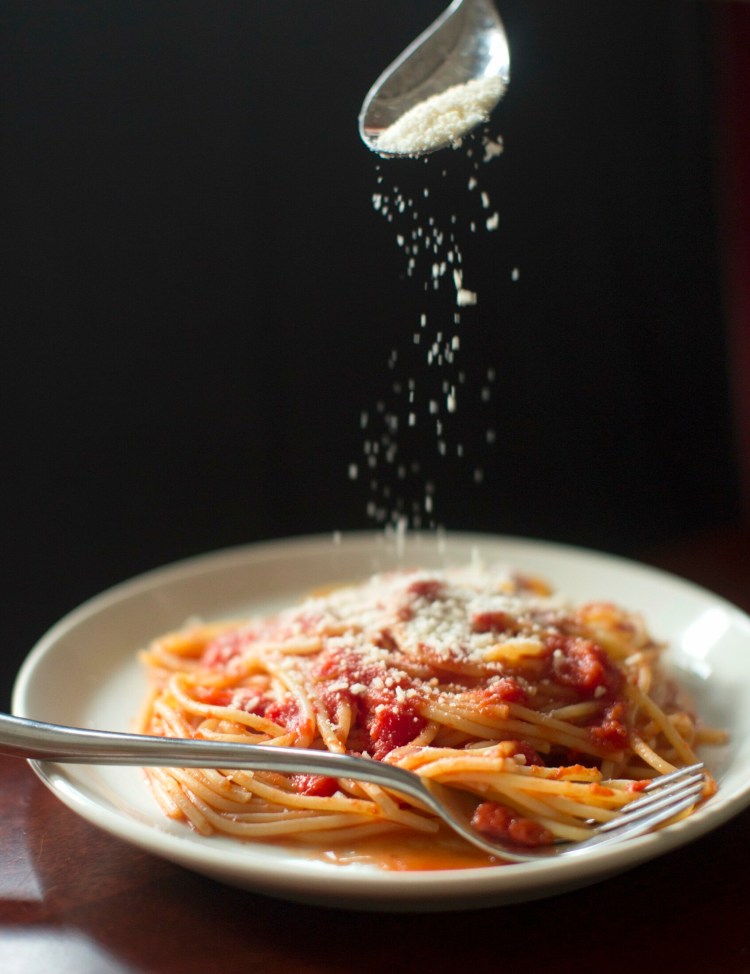Use dried seaweed like bay leaves in your everyday cooking, suggests Portland chef Mike Wiley, and you’ll be doing the local, sustainable seaweed economy a big favor. He’s also quick to point out that a little piece of kelp (sometimes called Atlantic kombu on these shores), dulse, alaria (Atlantic wakame) or laver (Atlantic nori) can do wonders for soups, sauces, stews, pots of legumes or anything else that requires simmering time on the stove.
Local food doesn’t have to be a center-of-the-plate attraction to make a big impact, Wylie explained to a packed house at last month’s “Why Seaweed Matters” networking event. The seaweed soiree was co-sponsored by the Maine Center for Graduate and Professional Studies, Startup Maine and New England Ocean Cluster and was held at Maine Craft Distilling in Portland.
During a panel discussion, Wiley said that when he walks through any of the Big Tree Hospitality kitchens he co-owns and operates, and he sees a pot of anything simmering on the stove, “I’m like ‘throw some seaweed in that!’ because it makes most things taste better.”
The dishes at Hugo’s, Eventide Oyster Co.and Honey Paw, the restaurants that make up Big Tree Hospitality, will sometimes have seaweed, sea greens or sea vegetables sitting artfully on a dish in plain sight to make diners think about these raw ingredients as abundant, sustainable and delicious food options. But the real magic of encouraging more people to eat more seaweed happens on the stove, in that simmering pot.

Marcella Hazan’s tomato butter sauce with added kelp on Christine Burns Rudalevige’s stove. Staff photo by Brianna Soukup
Dried kelp is rich in flavor-enhancing glutamic acid, the substance responsible for most umami flavor blasts. Kombu/kelp is the key ingredient in dashi, Japan’s centuries-old, multipurpose base for soups and sauces, essentially the Japanese version of stock. Wiley argues that seaweed also deepens flavor in dishes stemming from many other cultures, everything from vegetable soup and tomato sauce to rice and beans and meaty braises.
When making dashi, Japanese cooks typically add kelp/kombu to cold water and let it soak for 20-30 minutes. The water is then brought to just below a boil, at which point the kelp is removed because too high temperatures can pull out off flavors from the seaweed. When including dried seaweed in your everyday cooking, for every quart of liquid (or liquid-like ingredients), add a 2- by 2-inch piece of dried seaweed, before setting the pot to simmer. The rule of thumb is that most seaweed has done its work after 30-40 minutes in the pot.
What happens to the seaweed after it has contributed its flavor to the pot is up to you. If you don’t want your eaters to know, fish it out and compost it. If you want to make a sustainability statement and start a conversation, slice it into very thin strips and add it back into the sauce/liquid before serving.
With a dozen or so companies selling as many varieties of seaweed in Maine, how does a cook know which is best for both their discerning palate and their grandmother’s Sunday gravy? Steep it like tea. Then smell and sip the water in which it has been steeped. The aroma and flavor will give you a good clue to how it will deepen the flavor of your dish.

Kelp steeped in water. Steeping the seaweed like tea is a good way of finding out the flavor of it and giving a sense what it will bring to the flavor of your dish. Staff photo by Brianna Soukup
I taste-tested local alaria, dulse and kelp to see which one would best complement my go-to pasta sauce – Marcella Hazan’s Tomato and Butter Sauce. While I don’t add a bay leaf to this sauce, I have been known to smooth out the acidity by putting in a piece of parmesan cheese rind to do just that, and I wanted the seaweed to act in the same fashion. The dulse was too smoky and the alaria too delicate, but the kelp – with its strong, earthy tone –was just right. I tried it in the sauce once, and vowed to take Wiley’s advice and add it every time.
Christine Burns Rudalevige is a food writer, recipe developer and tester and cooking teacher in Brunswick, and the author of “Green Plate Special,” a cookbook from Islandport based on these columns. She can be contacted at:
cburns1227@gmail.com
Marcella Hazan’s Tomato Butter Sauce (with Kelp)
This is a seaweedy adaptation of what may be the most famous recipe created by Italian cookbook author Marcella Hazan. Use your favorite canned tomatoes for this, don’t skimp on the butter and find kelp at your local health-food store.
This recipe makes enough sauce for a pound of pasta, serving 4.
2 cups whole, peeled, canned tomatoes, plus their juices
5 tablespoons butter
1 onion, peeled and cut in half
1 (2- to 3-inch) piece dried kelp
Salt
Combine the tomatoes, their juices, the butter, the onion halves and kelp in a wide saucepan.
Place over medium heat and bring to a simmer. Cook, uncovered, for about 45 minutes. Stir occasionally, mashing any large pieces of tomato with a spoon. Season with salt as necessary. Remove and compost both the kelp and the onion before tossing the sauce with pasta.
Send questions/comments to the editors.



Comments are no longer available on this story